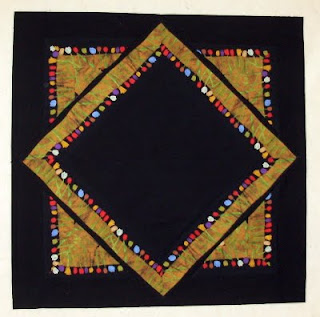The week before I went on vacation, I headed to the two closest quilt shops to look for fabric for a particular project. Didn't find what I wanted, but I did find these.
And these that go with another piece I'd bought earlier.
And these two pieces from the clearance section. Pretty backs for some future quilt.
Then on vacation I discovered
Heartfelt Quilting and Sewing completely by accident. I ended up spending two hours there wandering through the shop. Good thing I don't live close or I'd be in BIG trouble. The shop is huge with a nice selection of Civil War reproductions, 1930s reproductions, batiks, novelties, Asian fabrics, solids, current fabric lines, threads, fusibles, buttons, rulers, books, purse making notions, etc. I've never seen a shop with such a good variety of quilting fabrics
and so many sewing tools. The shop also has a couple longarms that you can learn on and then rent to quilt your own quilts. I would love to do that and see how I like longarm quilting.
When you buy fabric without a particular quilt in mind, how much do you buy? I get fat quarters when they are available, but when they aren't I have a hard time deciding how much. How much for a main fabric piece that could be a border? How much for something that will be used in blocks?


































